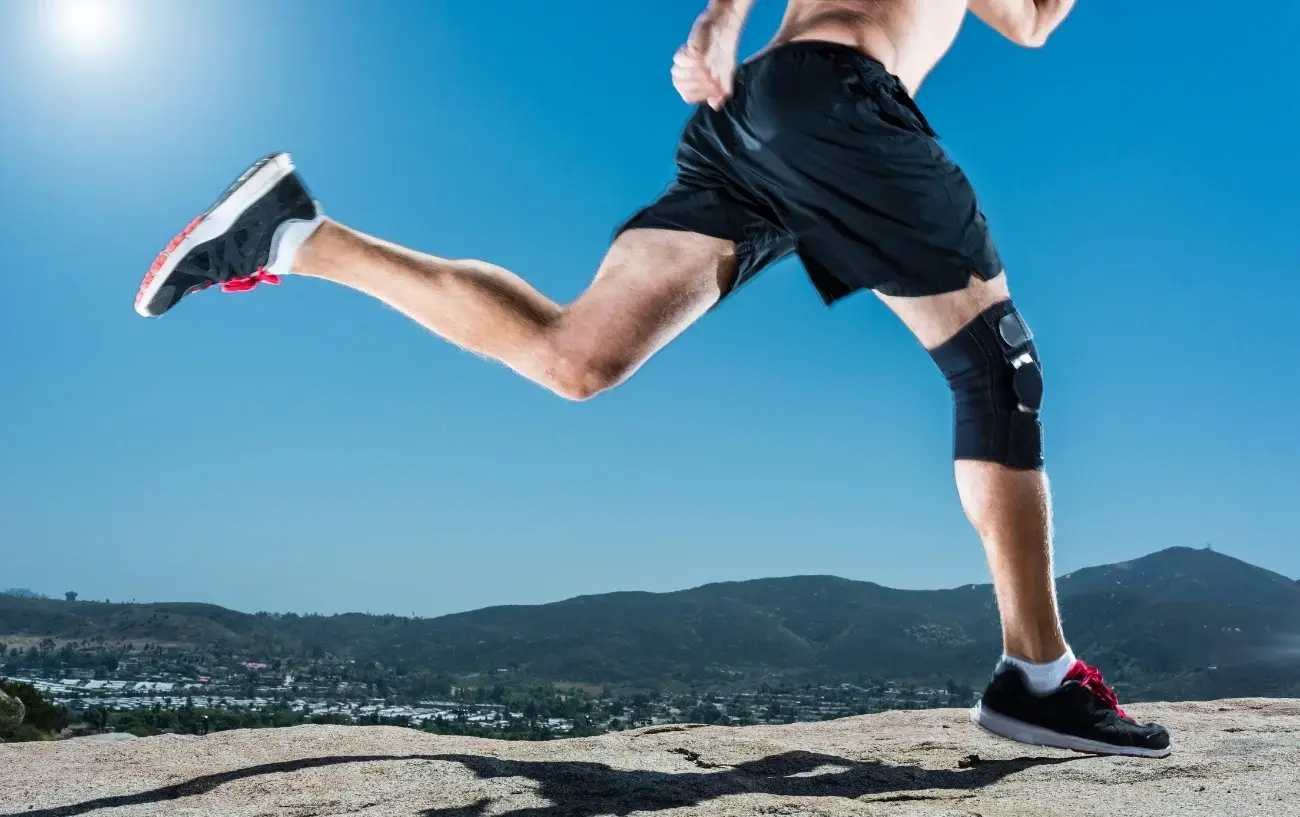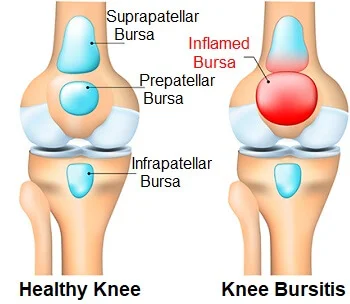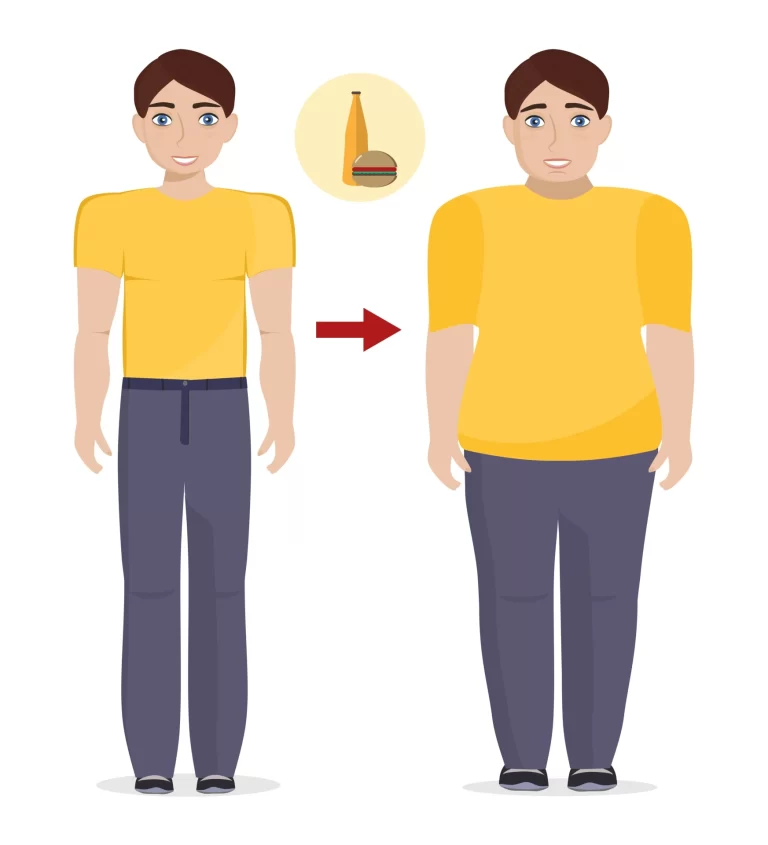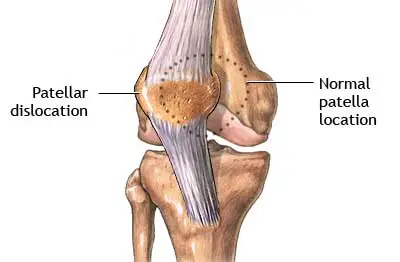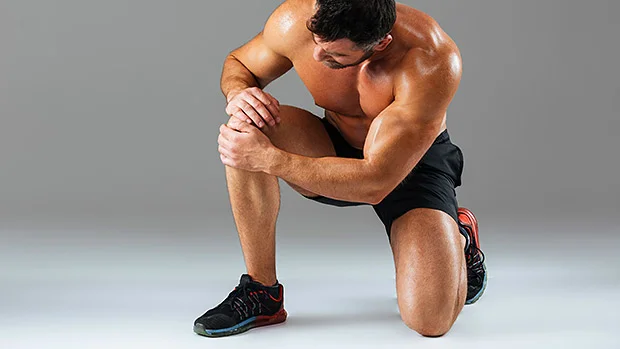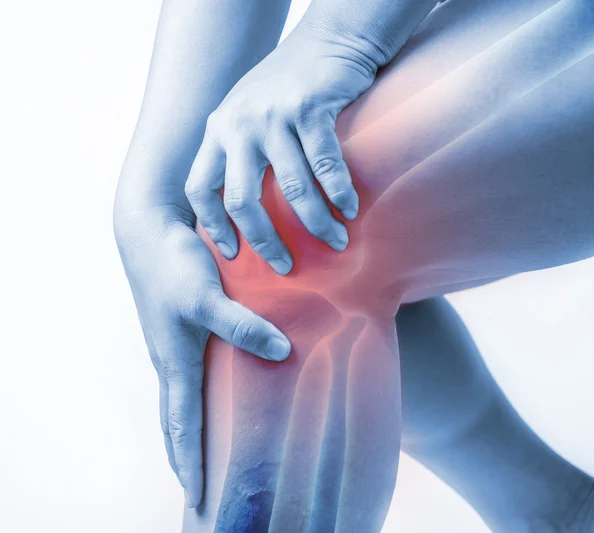When Should You Wear a Knee Brace For Running?
Wearing a knee brace for running can be beneficial in various situations to provide support, stability, and pain relief to the knee joint. Understanding when to use a knee brace is crucial for runners to prevent injuries and maintain their fitness.
This introduction will explore the key scenarios in which wearing a knee brace during running becomes essential, offering a glimpse into the comprehensive guidance that follows.
Table of Contents
What Does a Runner’s Knee Feel Like?
Runners can experience pain in the front, sides, or back of their knees while running. The discomfort could be mild or it might be strong and intense.
What Should I Do About the Runner’s Knee?
- Add ice or a bag of frozen peas wrapped in a moist tea towel to the sore area for up to 20 minutes several times daily to relieve knee pain at home. Avoid immediately applying ice to your skin.
- Consult a doctor immediately if the pain is severe or the knee is swollen.
- If your knee discomfort is not severe, stop running and visit a doctor or physiotherapist if it persists after a short while.
- To aid in your recovery, they may also suggest stretches or exercises.
When Should Runners Wear Knee Braces?
- Although knee braces can help runners who are recovering from operations or injuries, incorrect knee brace use could cause runners to become unduly reliant on this support equipment.
- Knee braces are typically used for rehabilitation following an injury or surgery. Giving people ample support to engage in the exercises required for a full recovery is one of the key purposes of a knee brace. Knee braces serve as a healing help in this way. They are not intended to offer continuous, long-term support.
- After surgery or an injury, wearing a knee brace appropriately will reduce its necessity until it is no longer required. Similar to this, knee braces are also advised for people with long-term knee disorders such as osteoarthritis, anterior knee pain, or patella tendinopathy.
- Overall, only athletes recovering from surgery or persistent ailments should wear knee braces while running. Running, however, should not be done while wearing knee braces.
The Advantages Of Wearing A Knee Brace When Running
If a doctor has advised you to wear a knee brace while jogging, you might be concerned about how it will affect your performance. There are certain benefits to utilizing knee braces, even if, as we previously noted, they should only be used in specific situations.
Knee braces can help you run with better form.
- The knees (and ankles) can take a serious hit from improper running form. The use of a knee brace will encourage good running form after recovering from an injury. The result of utilizing a knee brace is to protect your knees in the long run and avoid knee injuries once the brace is no longer required.
- This is presuming that after you take off the brace, you won’t go back to your terrible old habits and that you ‘lock in’ the technical adjustments.
Your Knees Can Remain Aligned With Knee Braces
- The purpose of knee braces is to maintain normal knee alignment. Wearing one has that as its main goal.
- In essence, it maintains the alignment of your hip and knee joint. Your ligaments may be subjected to undue strain when you run with an out-of-place knee, which could result in them being stretched or torn.
- One of the essential steps to reducing this risk is to align your knees, although doing so is notoriously challenging. Anything that alters your running gait will require time and effort to adapt over time.
Impacts on your joints are reduced with knee braces.
- By distributing some of the loaded power when you plant your feet, a knee brace will lessen the effects on your joints.
- The sort of knee brace you select will ultimately determine how the device does this.
- But while you’re healing from an injury, you can run or exercise a little bit more effectively by utilizing a knee brace to lessen the strain on your joints.
The knee brace serves as somewhat of a psychological crutch for many runners. It’s simple to develop the habit of using a knee brace to cushion some of the painful kilometers, but don’t be fooled you can’t keep your body in this state for an extended period. - The injury is more likely to harm a muscle or joint that is already having trouble compensating and moving up or down the leg.
Knee Braces Reduce Chronic Condition Pain
- Your knees may be affected by a variety of chronic illnesses, which will make running more challenging.
- If you want to keep jogging despite your chronic disease, a knee brace might help you squeeze out a few extra miles that might not have been worth the cost.
How To Buy A Knee Brace?
- Choose the correct knee brace for you because they come in a variety of sizes and shapes.
- Consult your physiotherapist first, especially if you are in pain or suspect an upcoming ache.
- They will be able to advise you on purchasing a knee brace in the conventional type, one with added support, a medial, hinged, or patellar knee brace.
- Some significant warning signs are:
- flexible support
- breathable substance
- Versatile side stabilizers
- an open patella
What Kind of Knee Brace Should I Wear When Running?
- The sizes, shapes, and styles of knee braces are diverse. The most complicated immobilizing braces and the easiest compression sleeves can both be found with a quick search.
- Depending on your needs, you are aware of the knee braces that will function best for jogging.
- For instance, a brace that immobilizes the body is ineffective for sprinting. After a severe injury or surgery, the main goal of an immobilizer brace is to immobilize the joint.
Compression Knee Brace
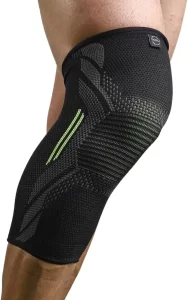
- One of the simplest and most popular braces is compression knee braces. Simple sleeves or a compression brace with some shape are available.
- For minor injuries like a straightforward meniscus tear, compression braces can be very effective.
- Your knee receives even pressure with a compression brace. Walking or even just standing puts strain on your knee and the nearby tissue. With a compression brace, pressure is transferred from your joint to the stronger long bone and surrounding muscles.
- A stretchy-shaped, cushioned neoprene cylinder known as a compression brace. If you require extra mobility, it can have a bigger region for either your knee cap or the entire knee joint.
- Even if your knee is not hurt, wearing a compression brace can be beneficial. It gives your knees more support and serves as a reminder to maintain proper form when running.
Hinged Knee Brace
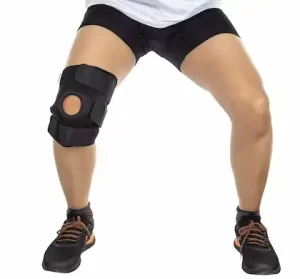
- While still providing movement, a hinged brace is substantially more stiff than a compression brace. The brace has a hinge at the knee joint and is made of structural materials on the sides of your knee. As a result, it enables you to swing your knee safely forward and backward while maintaining hip alignment.
- Your knee is prevented from overextending and from kicking forward too much by the hinged knee brace.
- A hinged knee brace is typically required when you recuperate from a catastrophic injury. The hinged knee brace stops you from bending your knee and reinjuring the ligament while your ligaments are mending since it prevents your knee from shifting to the side.
- By wearing a hinged knee brace, you can walk without difficulty, but since the brace is constrictive, jogging may be difficult.
- Functional knee braces include compression braces as well as hinged knee braces. With the aid of functional knee braces, you can heal from an accident and restore your knee to its original state. Almost any activity can be performed while wearing a functioning knee brace, such as a compression or hinged brace.
Wrap-Around Knee Braces
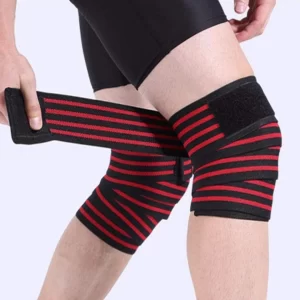
- Compression braces are the least popular type of brace on the market, followed by wrap-around knee braces. The wrap-around braces open on one side as opposed to slipping over your knee like a compression brace. To fit your particular leg and knee, you wrap the brace over your knee and then tighten it.
- Since wrap-around braces are the market’s most versatile fit, many people carry them in their first aid kits. They are made of elastic compression material and a few built-in components, which are frequently sewn into the brace’s sides. They are more than just compression materials; rather, they have the shape of a hingeless brace.
- You can self-treat knee sprains or strains by using a wrap-around brace. You can start by tightening the brace to get the necessary rigidity, and as your discomfort subsides and your knee heals, you can gradually loosen it.
- Even with a wrap-around brace, you can still run.
- A wrap-around brace is a terrific idea if your knees have previously been injured. For runners who slip and fall more frequently than others, wrap-around braces can offer prophylactic support.
Padded Knee Brace
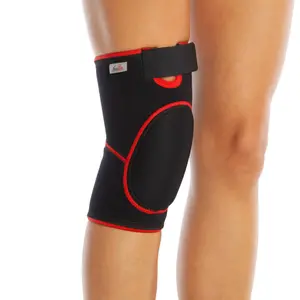
- For people who frequently kneel, whether at work or for fun, padded knee braces are available. Therefore, padded knee braces make sense if you are a gardener or carpet layer.
- Padded knee braces do not, however, make sense if you need a knee brace for running. Additional padding will protect your kneecap and meniscus if you require more kneecap security when running and are concerned about the surface you’re running on.
Unloader or Offloader Knee Brace
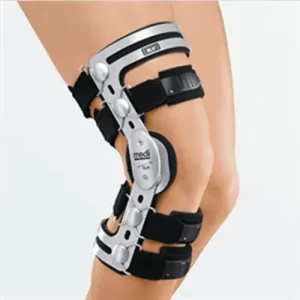
- Running causes your knee to experience some strain and tightness. Running-related knee discomfort and inflammation can be reduced by using an unloader or offloader brace. Stress is offloaded or unloaded.
- With the aid of an unloader knee brace, you may transfer stress and weight from your knee to your thigh bone. Your knee will be forced to bend by the brace to relieve stress on the inner knee.
- An unloader brace will assist in reducing discomfort and strain on your knee if you’ve damaged it or injured a tendon.
- Running-related knee pain is most frequently caused by a condition known as “runner’s knee.” The patellar tendon, which connects your kneecap to your shinbone, gets overextended and swollen, resulting in the runner’s knee. Simply put, your knee hurts.
- While the tendonitis is under management, an unloader brace might transfer the strain and suffering from the runner’s knee to your thigh bone.
Prophylactic knee braces
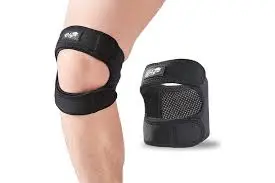
- High-impact sports athletes can use preventative knee braces to shield their knees from common ailments like ACL (Anterior Cruciate Ligament) tears. The Medial Collateral Ligament and the Posterior Cruciate Ligament are likewise said to be protected by them.
How Can I Tell If a Knee Brace Is Necessary?
- Simply said, unless a medical professional advises you to use one, you don’t need a knee brace.
- The Use of a brace may be advantageous if you recently had knee surgery or a minor injury.
- A knee brace may be helpful for people who have certain disorders including Patella Tendinopathy and Anterior Knee Pain (PFPS).
- The simplest way to find out is to come in for a consultation with one of our knee specialists, who will provide you with the finest guidance and help you regain your confidence in movement.
- In general, there is very little danger associated with wearing a light strap or brace if you feel that it improves your mood.
- It’s crucial to keep in mind, though, that braces and strappings should only be applied to help with rehabilitation after a proper program of physiotherapy exercises.
- They do not serve as a substitute for a tailored, qualified rehabilitation plan, whose outcomes are frequently more pronounced and long-lasting.
Summary:
Bracing wear for running is essential for providing support and stability to the lower limbs during high-impact activities. These specialized braces are designed to reduce the risk of injuries, particularly to the ankles and knees, by offering extra reinforcement and compression. They come in various forms, including ankle braces, knee braces, and compression sleeves.
Ankle braces help prevent sprains and provide added security for runners, while knee braces can alleviate pain and protect against conditions like a runner’s knee. Compression sleeves enhance circulation, reducing muscle fatigue and aiding in recovery. Overall, bracing wear for running is a valuable tool for both injury prevention and performance optimization, allowing runners to enjoy a safer and more comfortable experience on the track or trail.
FAQs:
Braces can provide stability and support to injured or weak joints, reducing the risk of further injury during physical activity.
Some runners wear braces preventively, especially if they have a history of joint instability or are prone to certain injuries. However, it’s essential to consult with a healthcare professional before using braces as a preventive measure.
Braces are typically worn directly on the skin or over a thin layer of clothing for better compression and support. For correct usage, adhere to the manufacturer’s guidelines.
It’s possible to wear a brace for long-distance running if prescribed by a healthcare professional. However, make sure it’s comfortable and doesn’t cause chafing or irritation during extended periods of activity.
While braces may provide support and stability, they can also slightly alter your running biomechanics. It’s essential to adapt to the brace’s feel and ensure it doesn’t hinder your performance or cause discomfort.
Once you’ve fully recovered from an injury, you may not need to wear a brace during running. Consult with your healthcare provider for guidance on when and how to transition out of brace use.
References:
Website, N. (2022, December 22). Knee pain and other running injuries. nhs. uk. https://www.nhs.uk/live-well/exercise/running-and-aerobic-exercises/knee-pain-and-other-running-injuries/
Randall, A. (2023, March 15). Should I Wear A Knee Brace For Running? [Types + Benefits]. Revel Sports. https://revelsports.com/knee-brace-for-running/
Liao, E. (2021, December 14). The Complete Guide That Makes Running With a Knee Brace Simple. PowerReboundTM. https://www.powerrebound.com/blogs/running/running-with-a-knee-brace/
Physiotherapy, S. (n.d.). Should I wear a knee brace for running? https://www.synergyphysio.co.uk/news/should-i-wear-a-knee-brace-for-running

